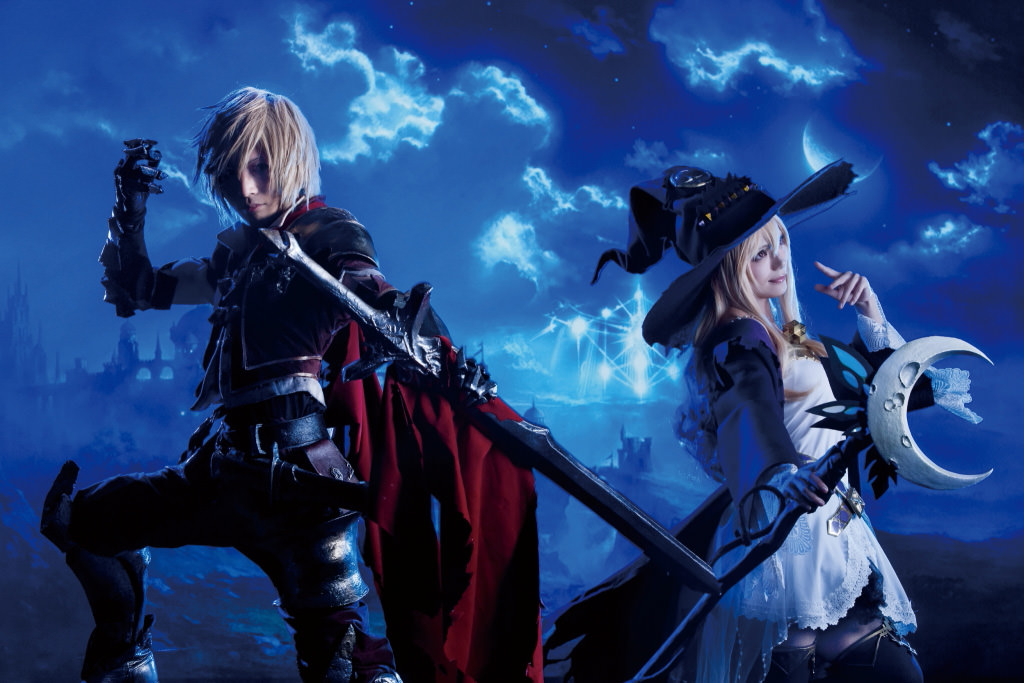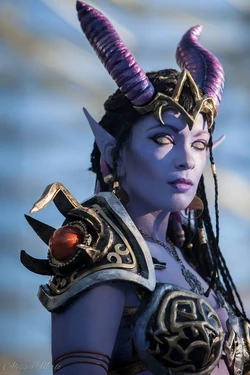

Cosplay – A Celebration of Creativity, and the Battle to Preserve Its Roots
Cosplay, the beautiful intersection of costume and play, has blossomed from a niche hobby into a global cultural movement. What began as personal expressions of fandom at conventions has evolved into a multi-faceted art form that transcends generations, communities, and borders. Today, cosplay is a creative sanctuary – a space where fans pay tribute to the characters and stories that shaped their lives.
But as cosplay grows in visibility, its essence is shifting. What was once a celebration of artistry, craftsmanship, and inclusivity is increasingly overshadowed by oversexualization, media exploitation, and superficiality. The heart of cosplay – the makers, artisans, and storytellers – risks being drowned out by the pursuit of clicks and algorithms that favor marketability over substance.
This isn’t a condemnation of personal expression or sexual empowerment. Cosplay has always embraced diversity, and self-expression in all forms is essential to the community. However, a balance must be struck. If the foundation of cosplay shifts too far into objectification and thirst traps, the art form that once welcomed everyone may become exclusionary, superficial, and unrecognizable.
To reclaim the core of cosplay, we must celebrate its history, honor the artistry behind it, and acknowledge the fine line between empowerment and commodification.
The Origins of Cosplay – From Masquerades to Fandom
Cosplay, as we know it today, draws from centuries of costume culture, performance art, and literary escapism. Its roots can be traced to the 15th-century masquerade balls of Europe, where elaborate costumes and masks allowed participants to adopt new personas and celebrate without societal limitations.
By the 19th century, masquerades had evolved into costume balls and themed events where guests dressed as historical figures, fictional characters, and mythological beings. This fusion of fiction and performance laid the groundwork for the interactive fan-driven costuming we recognize today.
The Birth of Fan Costuming – Science Fiction and the Rise of Conventions
Modern cosplay’s direct lineage began in the early 20th century, coinciding with the rise of science fiction literature, pulp magazines, and film. Fans weren’t satisfied with just consuming stories – they wanted to become part of those worlds.
In 1939, the first World Science Fiction Convention (Worldcon) became the birthplace of fan costuming. Forrest J Ackerman and Myrtle R. Douglas arrived dressed in “futuristic attire” inspired by pulp stories. Their bold decision to embody their fandom physically captivated other attendees and sparked a movement that would soon spread across conventions worldwide.
Throughout the 1940s and 50s, fan clubs, comic book gatherings, and Star Trek conventions became breeding grounds for creative fan costuming. These events laid the foundation for the costume competitions and masquerades that would define fandom conventions for decades.
Japan’s Influence – The Emergence of Cosplay as a Cultural Movement
While costuming thrived in Western sci-fi and fantasy circles, Japan was cultivating its own tradition of fan-driven attire. By the 1970s, Japanese fans were dressing as characters from anime, manga, and tokusatsu (live-action special effects shows).
However, the term “cosplay” hadn’t yet been coined. This changed in 1984 when Nobuyuki Takahashi attended Worldcon in Los Angeles and was inspired by the elaborate costuming he witnessed. Upon returning to Japan, he combined the words “costume” and “play” to create the term that would define the art form moving forward.
Cosplay took off rapidly in Japan, becoming an integral part of anime and gaming culture. From Harajuku fashion to large-scale anime conventions, cosplay became a visual extension of fandom and a significant part of Japan’s pop culture exports.
The Global Spread – How Cosplay Took Over the World
The 1990s and early 2000s marked a turning point for cosplay. As anime, video games, and fantasy series gained global popularity, cosplay began to appear at Western conventions. Titles like Sailor Moon, Dragon Ball Z, Final Fantasy, and The Legend of Zelda became cornerstones of cosplay culture.
Major conventions like Anime Expo, San Diego Comic-Con, and Gamescom became hotbeds for cosplay communities to flourish. Cosplay expanded beyond anime and sci-fi, incorporating characters from movies, comics, television, and Western video games.
By the mid-2000s, cosplay had transformed into a global subculture that blurred the lines between fan expression, performance art, and craftsmanship.
Craftsmanship and Artistry – The Soul of Cosplay
Cosplay is more than simply putting on a costume – it is the fusion of art, engineering, fashion, and performance. It represents months of research, design, and physical labor, transforming raw materials into iconic representations of beloved characters. Cosplayers are not just fans – they are artists, engineers, and storytellers, breathing life into the fictional worlds that shaped them.
At its heart, cosplay celebrates the intersection of multiple disciplines. From sewing and armor crafting to prop-making and wig styling, cosplay draws upon technical skills that rival professional costume design. The attention to detail, accuracy, and creativity required for cosplay elevates it beyond simple dress-up – it is a living, wearable form of art.
The Skills Behind the Craft
Cosplay isn’t one-dimensional; it draws from a spectrum of artistic and technical skills. Some cosplayers excel in armor-smithing, while others focus on intricate embroidery, wig styling, or 3D modeling. The diversity of skills needed makes cosplay a space where everyone can find their niche.
Here are just a few of the foundational skills that make up the backbone of cosplay craftsmanship:
1. Armor Crafting – Foam, Thermoplastics, and Metalwork
- Crafting armor is one of the most visually striking aspects of cosplay. Cosplayers use EVA foam, thermoplastics like Worbla, and even metalworking to build full-body suits of armor reminiscent of The Mandalorian, Warhammer 40K, and World of Warcraft.
- This craft requires precision cutting, heat molding, and layering techniques to create durable, realistic armor. The addition of battle damage, paintwork, and weathering effects adds layers of realism that blur the line between reality and fantasy.
2. Sewing, Embroidery, and Tailoring
- Fabric-based cosplays often require extensive sewing knowledge – from designing custom patterns to executing complex stitches, draping, and pleating. Cosplayers meticulously recreate everything from flowing robes and capes to fitted bodysuits and layered gowns.
- Characters like Princess Zelda, Geralt of Rivia, and Daenerys Targaryen require hand-stitched embroidery, intricate fabric layering, and detailed ornamentation. This work often takes months to complete, with cosplayers sourcing rare materials or custom-dyeing fabrics to match character designs.
3. 3D Printing and Prop Making
- 3D printing has revolutionized cosplay prop-making, allowing cosplayers to create precise, accurate replicas of weapons, masks, and intricate accessories. From Lightsabers to Destiny’s pulse rifles, 3D printing offers unparalleled precision in recreating fictional objects.
- Cosplayers must design or purchase digital STL files, print, sand, assemble, and paint their props, transforming plastic into seemingly battle-hardened equipment.
4. Wig Styling and Makeup
- Hair and makeup are essential in selling the final look of a cosplay. Wig styling involves cutting, layering, dyeing, and shaping synthetic fibers into gravity-defying anime hair or flowing locks worthy of an elven queen.
- Makeup helps cosplayers transform their facial features to match characters, often using special effects (SFX), contouring, prosthetics, and colored contact lenses to capture the essence of the character.
5. Electronics and LED Integration
- Many cosplays now integrate lighting and electronic effects – think glowing arc reactors for Iron Man, LED-lit swords, or animated visors for characters like Samus Aran. Cosplayers use Arduino boards, LED strips, and EL wire to add dynamic visual effects to their costumes.
- This fusion of engineering and artistry represents one of the most cutting-edge aspects of cosplay craftsmanship.
The Rise of the Maker Movement
As cosplay craftsmanship has evolved, an entire sub-economy has emerged around it. Cosplayers are no longer lone creators – they are part of a larger maker movement. Online platforms like Etsy, Instagram, and Ko-fi allow cosplayers to sell patterns, 3D print files, armor kits, and tutorials to others in the community.
- Small businesses have flourished, specializing in niche cosplay materials – from thermoplastics to specialty fabrics.
- Patreon creators and YouTubers produce in-depth tutorials, ensuring that knowledge is shared and accessible, democratizing craftsmanship.
- Entire industries have sprung up around cosplay conventions, with contests that celebrate technical skill and artistic ingenuity.
Why Craftsmanship Matters – Reclaiming the Artistic Heart of Cosplay
The artistry behind cosplay isn’t just about replicating a fictional outfit – it’s an intensely personal journey of creativity, dedication, and expression. Each stitch, foam cut, and prop design carries with it hours of labor, mistakes, triumphs, and lessons learned. Cosplay is an art form driven by a love for storytelling and fandoms that have left a mark on the lives of creators.
For many cosplayers, crafting a costume isn’t just about aesthetics – it’s an immersive, often therapeutic process that reflects their personal passion, patience, and resilience. Cosplayers dedicate their free time (often juggling full-time jobs or school) to the meticulous creation of armor, gowns, props, and wigs. The result is more than just an outfit – it’s a testament to their devotion to the characters, worlds, and communities they cherish.
However, increasing commercialization and social media algorithms are quietly reshaping the landscape of cosplay. Craftsmanship is increasingly overlooked in favor of flashy, risqué, and marketable costumes that thrive in attention-driven platforms. This shift risks undermining the core values of cosplay by diminishing the contributions of those who prioritize artistry and accuracy over popularity and sex appeal.
The Overlooked Artists – A Growing Divide
In recent years, the cosplay community has witnessed a widening gap between cosplayers who focus on artistic builds and craftsmanship and those who adopt a more minimalist, provocative approach. While both expressions are valid, the disproportionate attention given to the latter creates an environment that marginalizes artists who invest months into their work.
- Armor builders and prop makers who painstakingly shape foam, thermoplastics, or metal find their work overshadowed by simple bikini cosplays or lingerie-inspired takes on characters.
- Sewing experts and tailors who replicate intricate, lore-accurate costumes compete for visibility against low-effort costumes that reveal more than they build.
- Cosplayers who prefer to focus on screen accuracy and lore often feel invisible in online spaces driven by thirst traps and viral appeal.
This isn’t a critique of sexy cosplay – self-expression through sensuality has always been part of fandom spaces. However, the imbalance in media attention creates a system where skin often overshadows skill.
Photographers and social platforms frequently gravitate toward cosplayers whose costumes maximize sex appeal over those that emphasize craftsmanship or character accuracy. This perpetuates the idea that success in cosplay is less about creativity and dedication and more about capitalizing on algorithms and market-driven aesthetics.
The Impact on Representation
The shift in focus doesn’t just affect craftsmanship – it narrows the scope of who is celebrated in the cosplay community.
- Male cosplayers, plus-size cosplayers, and non-binary creators are often sidelined, as media platforms tend to prioritize female-presenting cosplayers who embody sex appeal.
- Cosplayers from underrepresented backgrounds who excel in armor-smithing, tailoring, or prop design rarely receive the recognition that their craftsmanship deserves.
- The emphasis on sexualized cosplay disproportionately affects female cosplayers, reinforcing harmful stereotypes that female participation in fandom must be tied to attractiveness or sex appeal.
The result? Many talented cosplayers feel discouraged, unseen, or undervalued despite creating screen-accurate, meticulously designed costumes.
Cosplay as an Inclusive Art Form – The Loss of Safe Spaces
Cosplay was built on the foundation of inclusivity, creativity, and community. It was a space where anyone – regardless of gender, body type, skill level, or background – could participate and feel validated and celebrated. This safe space encouraged countless fans to step out of their comfort zones, learn new skills, and express their love for the fandoms that shaped them.
But as the cosplay scene becomes increasingly influencer-driven, these safe spaces are shrinking. Newcomers feel pressured to meet unrealistic standards of beauty and sex appeal instead of focusing on learning and creating. Cosplayers who once found joy in the craft may feel disillusioned, believing that craftsmanship alone isn’t enough.
This shift reflects larger trends in social media culture – where engagement is driven by visibility, and visibility often favors sex appeal over skill. The danger lies in how this changes the perception of cosplay as a whole. If the cosplay community becomes defined more by marketability than by artistic expression, the foundational values of the craft risk being lost.
Returning Cosplay to Its Artistic Roots
Cosplay cannot survive if craftsmanship takes a backseat to commercial trends. The key to preserving the community’s integrity lies in shifting the spotlight back to the artists, educators, and creators who keep cosplay vibrant and inclusive.
Here’s how we can collectively swing the pendulum back toward artistry:
1. Amplify the Makers
- Photographers, media outlets, and event organizers must make a concerted effort to highlight armor builders, seamstresses, prop makers, and creators whose work pushes the boundaries of craft.
- Focus on behind-the-scenes content, work-in-progress photos, and tutorials to celebrate the process, not just the final product.
2. Focus on Tutorials and Education
- Elevate creators who teach. Many cosplayers produce patterns, tutorials, and guides to help others learn new skills. By promoting educational content, we ensure that craftsmanship knowledge spreads across the community.
- Encourage the growth of workshops at conventions – panels on armor crafting, fabric dyeing, or wig styling should take center stage.
3. Diversify Representation
- The cosplay community should represent all body types, genders, ethnicities, and expressions of creativity. Plus-size cosplayers, male cosplayers, non-binary cosplayers, and POC creators must be uplifted alongside others.
- Media platforms and photographers must actively seek out diverse talent, ensuring that craftsmanship from all corners of the community is acknowledged.
4. Reframe Success in Cosplay
- While engagement on social media is valuable, true success in cosplay shouldn’t be measured solely by likes or followers. Highlighting passion projects, intricate builds, and transformative cosplays fosters an environment that values art over algorithms.
A Rebellion of Art – Reclaiming the Heart of Cosplay
Cosplay has never been just about the costumes – it’s about crafting dreams into reality with every stitch, weld, and brushstroke. It’s a movement born from the desire to step into the worlds we love, not by buying into superficiality but by building it with our own hands. Cosplay is the intersection of passion and skill, where imagination meets raw, relentless creation.
At its core, cosplay is a celebration of artistry, resilience, and innovation. Every seam, prop, and detail tells a story – not just of the characters we adore, but of the makers who breathe life into them. This is the soul of cosplay. And it’s time we reclaim it.
We stand at a crossroads. One path leads to corporate algorithms and marketable trends that reduce our craft to nothing more than surface-level appeal. The other leads to a renaissance of craftsmanship, where the spotlight shifts back to the armor builders, textile artists, prop makers, and visionaries who pour their hearts into their work.
The power to shape this future lies in our hands – the hands of creators, educators, and fans who refuse to let artistry fade beneath the weight of fleeting engagement. When we choose to elevate craftsmanship, diversity, and education, we send a powerful message:
The worth of our community cannot be measured by likes, but by the passion and talent that fuels it.
Let this be a call to action. Let us honor the unsung creators, the makers who labor in silence, and the dreamers who turn foam and thread into living art. Cosplay belongs to everyone – and when we celebrate the craft, we build a community where every artist, every creator, and every fan can thrive.
This is not just about reclaiming the past – it’s about forging the future.
